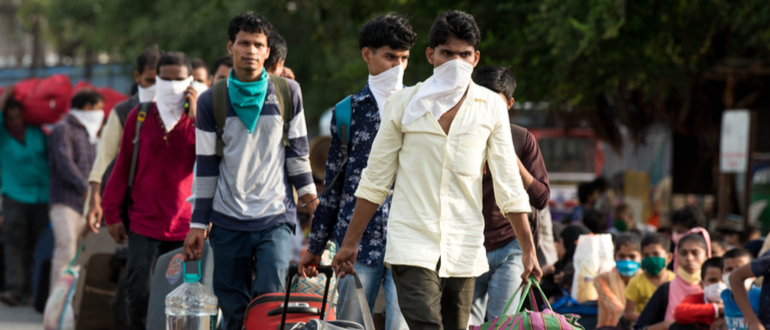Migrant Workers During Pandemic: A Struggle for Survival
What is the meaning of ‘Migrant Worker’?
Someone who moves within the home country or abroad for jobs. There is no intention to stay permanently at work, which puts the migrant workers in insecurity with new community dynamics and labor laws.
In this regard, migration can be classified under:
- Rural to urban
- Urban to Rural
- Rural to rural
- Urban to Urban
State-wise, migration is inter-state and intra-state.
Most migrant workers are daily wage laborers depending on their Managers/Supervisors, primarily indigenous to the area. The workers stand beside the road every day to be picked up for daily work. For contractual migrant workers, the employer takes care of their lodging and transportation to work.
This shows a cycle of resource disbursement where the employer (a Contractor/Sub-Contractor) earns from his workers delivering the demanded services. But what happens if their services are no more requested?
The first phase of lockdown in India was in March 2020, when all activities and markets of non-essential services were shut down nationwide. There was no work available, laborers were not allowed to seek employment or work in groups, and the transport network was frozen. This meant that the migrant workers were stuck far away from home without a source of income.
In some states like Kerala, where migrant workers form 80% of the economy, the State Government had made it mandatory for the employers to provide food and lodging to the workers initially, after which the NGOs and the local self-governments pitched in with essentials and Pandemic supplies. However, the focus was on migrant worker families because they were less likely to return to their native place and contribute to the economy.
Adapting Support: Challenges Faced by Migrant Workers During Pandemic
This wasn’t the case everywhere. Migrant workers resorted to walking home with whatever they had, and some perished to hunger on the way. It was advised by the Government to avoid reverse migration because it is not feasible in any form. However, no significant arrangements were made to ensure that the workers are appeased not to go back home at an unfavorable time.
Gradually, helpline desks were set up, and the Labor department geared up to channelize this displaced migrant population into the limited availability of trains. Some workers pooled money and hired a private vehicle to go home.
The story repeated itself in the second phase of the lockdown when the workers tried to return to work, but they had to leave disappointed. The country struggles to meet up with oxygen, medicine, and vaccination requirements, and the welfare of migrant workers has taken a back seat.
We must focus on migrant workers as pillars of our economy since they create the grassroots workforce and enable cities to prosper. In return, they deserve what they migrated for in the first place- a better standard of living, access to better opportunities, and basic facilities like healthcare and education.

